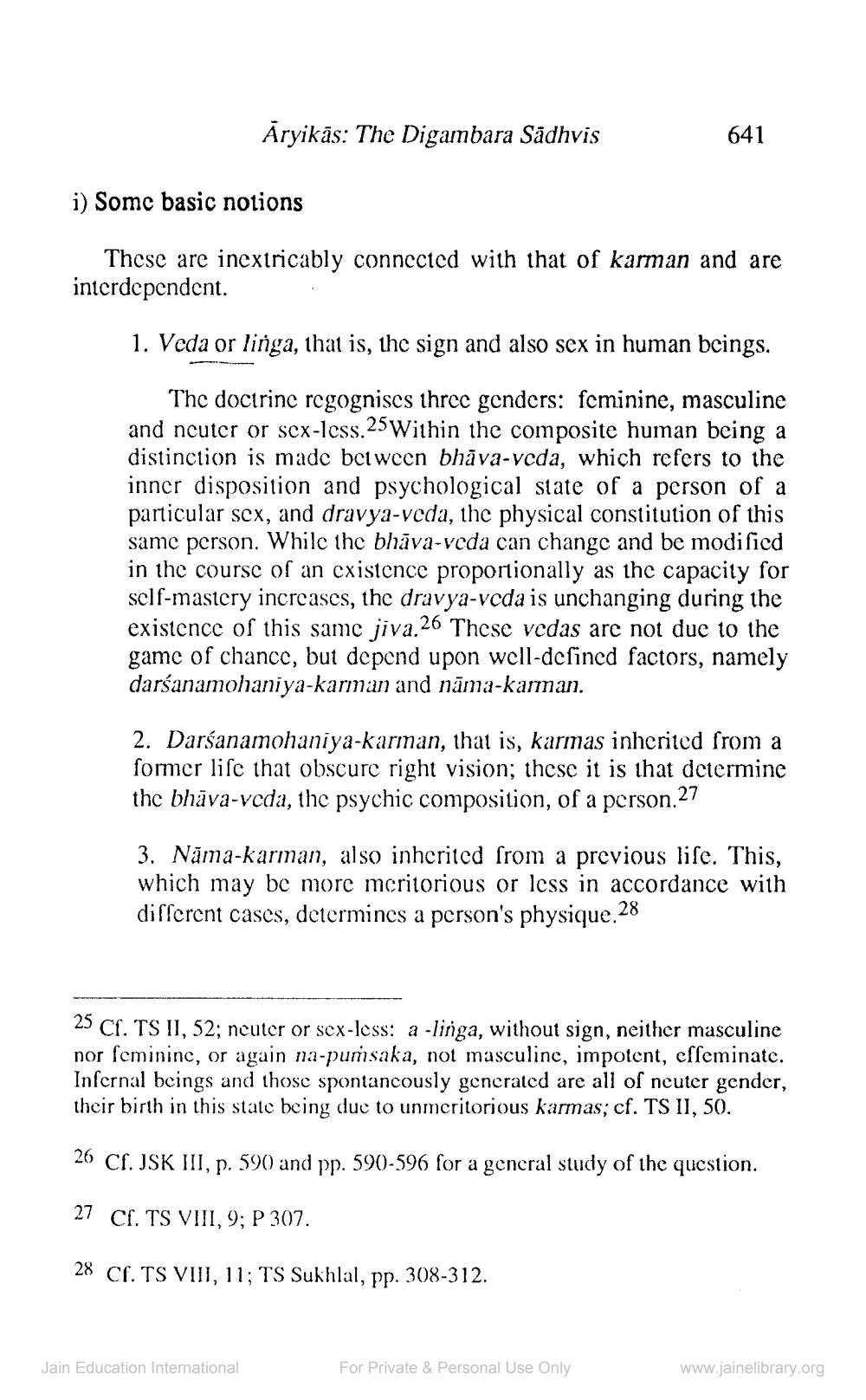________________
Āryikās: The Digambara Sādhvis
641
i) Some basic notions
These are inextricably connected with that of karman and are interdependent.
1. Veda or linga, that is, the sign and also sex in human beings.
The doctrine rcgogniscs three genders: feminine, masculine and ncuter or scx-less. 25Within the composite human being a distinction is made between bhāva-voda, which refers to the inner disposition and psychological state of a person of a particular sex, and dravya-voda, the physical constitution of this same person. While the bhāva-veda can change and be modified in the course of an existence proportionally as the capacity for self-mastery increases, the dravya-veda is unchanging during the existence of this same jiva.26 These vedas are not due to the game of chance, but depend upon well-defined factors, namely darśanamohaniya-karman and nāma-karman.
2. Darśanamohaniya-karman, that is, karmas inherited from a former lise that obscure right vision; these it is that determine the bhāva-veda, the psychic composition, of a person.27
3. Nāma-karman, also inherited from a previous lise. This, which may be more mcritorious or less in accordance with disserent cases, determines a person's physique.28
25 CC. TS II, 52; ncuter or sex-less: a-linga, without sign, neither masculine nor scmininc, or again na-pumsaka, not masculine, impotent, esseminate. Infernal beings and those spontancously generated are all of neuter gender, their birth in this state being due to unmeritorious karmas; cf. TS II, 50.
26 Cf. JSK III, p. 590) and pp. 590-596 for a general study of the question.
27 CT. TS VIII, 9; P 307.
28 Cf. TS VIII, 11; TS Sukhlal, pp. 308-312.
Jain Education International
For Private & Personal Use Only
www.jainelibrary.org




